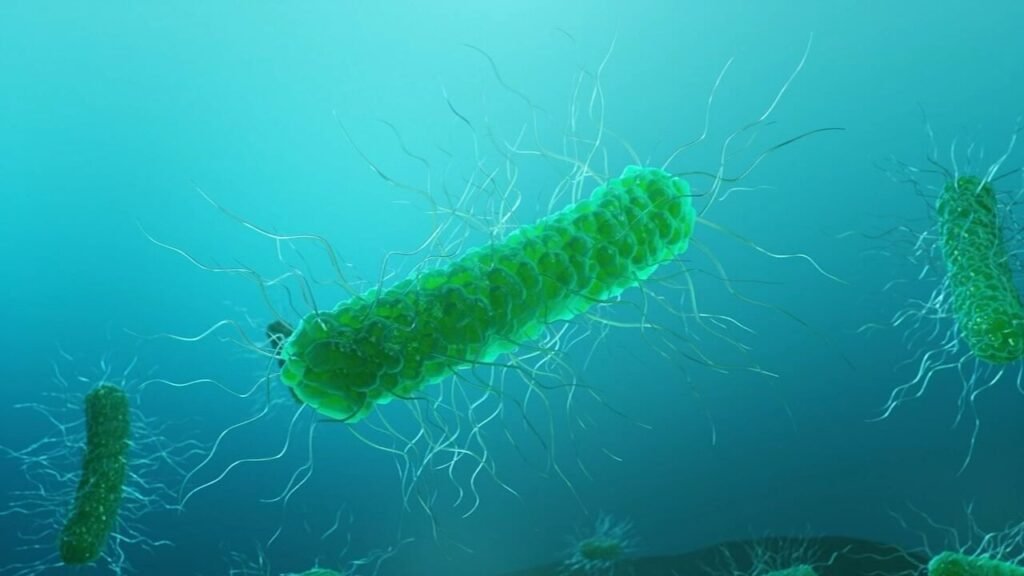The Centers for Disease Control and Prevention (CDC) has issued a health advisory in light of recent reports concerning a bacterial infection discovered in coastal waters. This particular bacterium, Vibrio vulnificus, naturally resides in raw or undercooked seafood, saltwater, and brackish water. Infections typically occur when an open wound comes into contact with the bacterium in aquatic environments.
This year has seen unfortunate instances of at least a dozen fatalities across the nation attributed to this infection. Annually, the CDC reports that approximately 80,000 individuals contract vibrio infections in the United States, with approximately 100 cases resulting in fatalities.

Scientific research has indicated that Vibrio vulnificus is expanding its geographical range northward as ocean temperatures rise due to climate change. The warmer waters expedite bacterial reproduction, as elucidated by Gabby Barbarite, a researcher at Florida Atlantic University’s Harbor Branch Oceanographic Institute. A study published in the journal Nature Portfolio in March has revealed an eight-fold increase in infections between 1988 and 2018 nationwide. Additionally, the bacterium’s distribution appears to extend approximately 30 miles northward along the East Coast each year.

Dr. William Schaffner, an infectious disease expert at Vanderbilt University, has observed that cases were previously concentrated predominantly in the Gulf of Mexico in the southern United States but are now becoming more widespread.
Commonly known as vibriosis, Vibrio vulnificus is a bacterial infection known to cause human illness. Informally, it has been referred to as the “flesh-eating” bacteria. However, it is essential to clarify that the bacterium does not consume tissue but can lead to tissue damage if it enters the body through an open wound. The term “Vulnificus” is derived from Latin, meaning “to wound.”
In certain instances, Vibrio vulnificus infections can result in severe wound infections, leading to tissue necrosis around the infected area, according to the CDC. Those affected may require intensive care or even limb amputations, and regrettably, approximately 1 in 5 individuals who contract the infection do not survive, sometimes succumbing to the illness within a day or two.

It is noteworthy that Vibrio bacteria naturally inhabit specific coastal waters throughout the year but tend to be more prevalent between May and October due to warmer water temperatures, as indicated by the CDC. Most infections occur when an open wound is exposed to saltwater or brackish water, although about 10% of reported cases are linked to the consumption of raw or undercooked shellfish.
What is Vibrio Vulnificus?
Vibrio vulnificus is a type of bacteria that naturally occurs in warm coastal waters, particularly in the Gulf of Mexico and along the southeastern coast of the United States. It is a member of the Vibrio genus, which also includes Vibrio cholerae, the bacterium responsible for cholera.
In Short
The CDC has taken the step of raising public awareness regarding recent cases of Vibrio vulnificus infections in the United States. While this bacterial infection is a matter of concern, it is vital to approach the issue with a balanced understanding of the associated risks and the preventive measures necessary to safeguard public health and well-being.
our blog has shed light on the growing concern of Vibrio Vulnificus infections in U.S. coastal areas. By understanding the risks, adopting preventive measures, and staying informed, we can empower ourselves and our communities to tackle this issue effectively. Vigilance, education, and awareness are key in safeguarding public health and well-being in the face of evolving challenges like this one. Stay safe, stay informed, and together, we can mitigate the threat posed by this bacterial infection.
Click here: https://truereviewmagazine.com/










